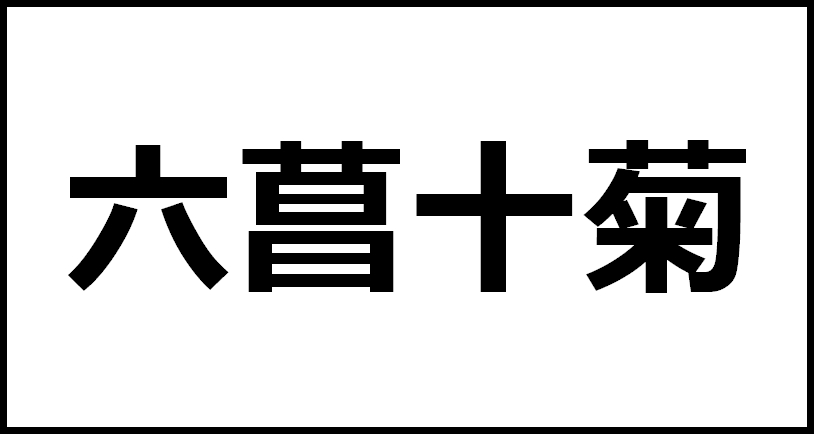六菖十菊について。四字熟語の六菖十菊の読み方や意味、英語や外国語での意味をまとめました。
六菖十菊について
六菖十菊の読み方・意味
| 四字熟語 | 六菖十菊 |
| 読み方 | りくしょうじゅうぎく |
| カタカナ読み | リクショウジュウギク |
| ローマ字読み | rikushojugiku |
| 読みの文字数 | 10文字読みの四字熟語 |
| 頭文字 | 「り」から始まる四字熟語 |
| 構成する文字 | ・六 ・十 ・菊 ・菖 |
| 意味 | 菖蒲は五月五日の端午の節句に飾り、菊は九月九日の重用の節句に飾るが、五月六日の菖蒲と九月十日の菊という意味から、時期が過ぎてしまって、役に立たないもののこと。 |
六菖十菊の意味(外国語)
六菖十菊の外国語での意味をまとめました。
| 英語 | The irises are displayed on the Boy’s Festival on May 5th, and the chrysanthemums are displayed on the important festival on September 9th. , useless things. |
| スペイン語 | Los lirios se exhiben en el Festival del Niño el 5 de mayo, y los crisantemos se exhiben en el festival importante el 9 de septiembre, cosas inútiles. |
| イタリア語 | Gli iris vengono esposti al Festival dei Ragazzi il 5 maggio, ei crisantemi vengono esposti all’importante festival il 9 settembre. , cose inutili. |
| ポルトガル語 | As íris são expostas na festa dos meninos em 5 de maio, e os crisântemos são exibidos na importante festa de 9 de setembro., coisas inúteis. |
| フランス語 | Les iris sont exposés à la fête des garçons le 5 mai, et les chrysanthèmes sont exposés à l’importante fête du 9 septembre. , des choses inutiles. |
| 中国語 | 5月5日端午节放鸢尾花,9月9日重要节日放菊花,没用的东西。 |
| 韓国語 | 창포는 5월 5일의 단오의 절구에 장식해, 국화는 9월 9일의 중용의 절구에 장식하지만, 5월 6일의 창포와 9월 10일의 국화라는 의미로부터, 시기가 지나 버려 , 쓸모없는 것들. |


